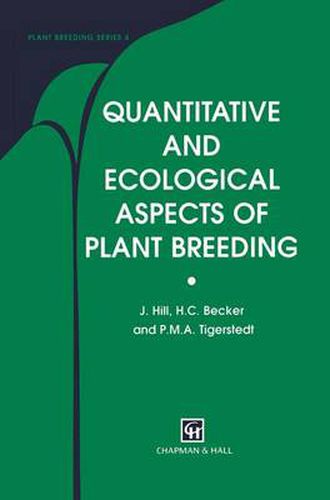Readings Newsletter
Become a Readings Member to make your shopping experience even easier.
Sign in or sign up for free!
You’re not far away from qualifying for FREE standard shipping within Australia
You’ve qualified for FREE standard shipping within Australia
The cart is loading…






Aimed at undergraduate and graduate students pursuing courses in applied genetics and plant breeding, but particularly at practising plant breeders, this book assumes only a basic knowledge of genetics and statistics. It expressly seeks to examine and explain quantitative and ecological aspects of plant breeding from a practical point-of-view, using data taken whenever possible from actual breeding trials to illustrate the analytical techniques described. The text is divided into eight chapters, of which the first is a historical introduction to the subject. Topics covered in the remaining chapters include the fitting of genetic models to means and variances and their role in prediction; experimental mating designs and their use in breeding programmes; selection with and without competition; the problems posed by, and the analysis of, genotype-environment interactions in multi-environment trials; stability, adaptability and adaptation; genetic resources and diversity, and ecogeographical breeding; breeding for biotic and abiotic stress. This book should be of interest to plant scientists, agricultural scientists, plant breeders and geneticists.
$9.00 standard shipping within Australia
FREE standard shipping within Australia for orders over $100.00
Express & International shipping calculated at checkout
Aimed at undergraduate and graduate students pursuing courses in applied genetics and plant breeding, but particularly at practising plant breeders, this book assumes only a basic knowledge of genetics and statistics. It expressly seeks to examine and explain quantitative and ecological aspects of plant breeding from a practical point-of-view, using data taken whenever possible from actual breeding trials to illustrate the analytical techniques described. The text is divided into eight chapters, of which the first is a historical introduction to the subject. Topics covered in the remaining chapters include the fitting of genetic models to means and variances and their role in prediction; experimental mating designs and their use in breeding programmes; selection with and without competition; the problems posed by, and the analysis of, genotype-environment interactions in multi-environment trials; stability, adaptability and adaptation; genetic resources and diversity, and ecogeographical breeding; breeding for biotic and abiotic stress. This book should be of interest to plant scientists, agricultural scientists, plant breeders and geneticists.